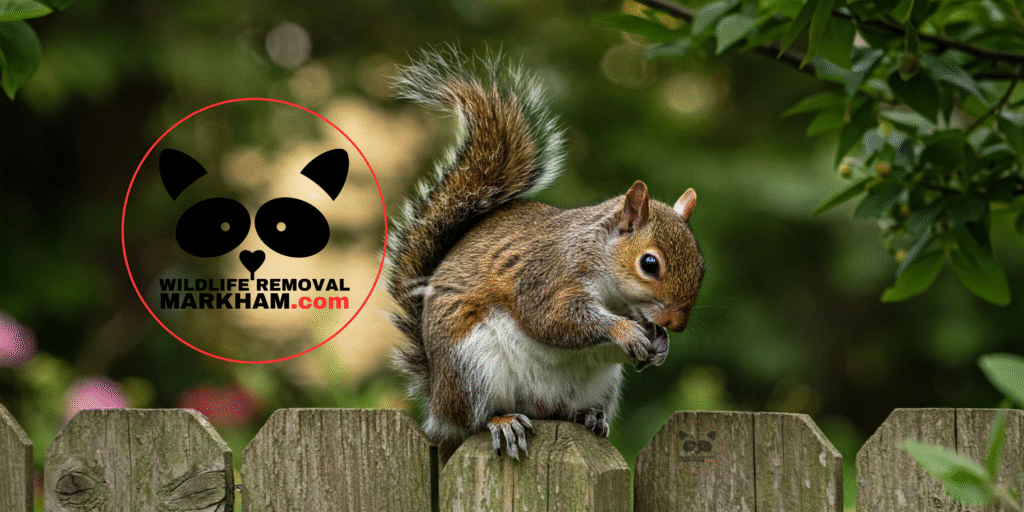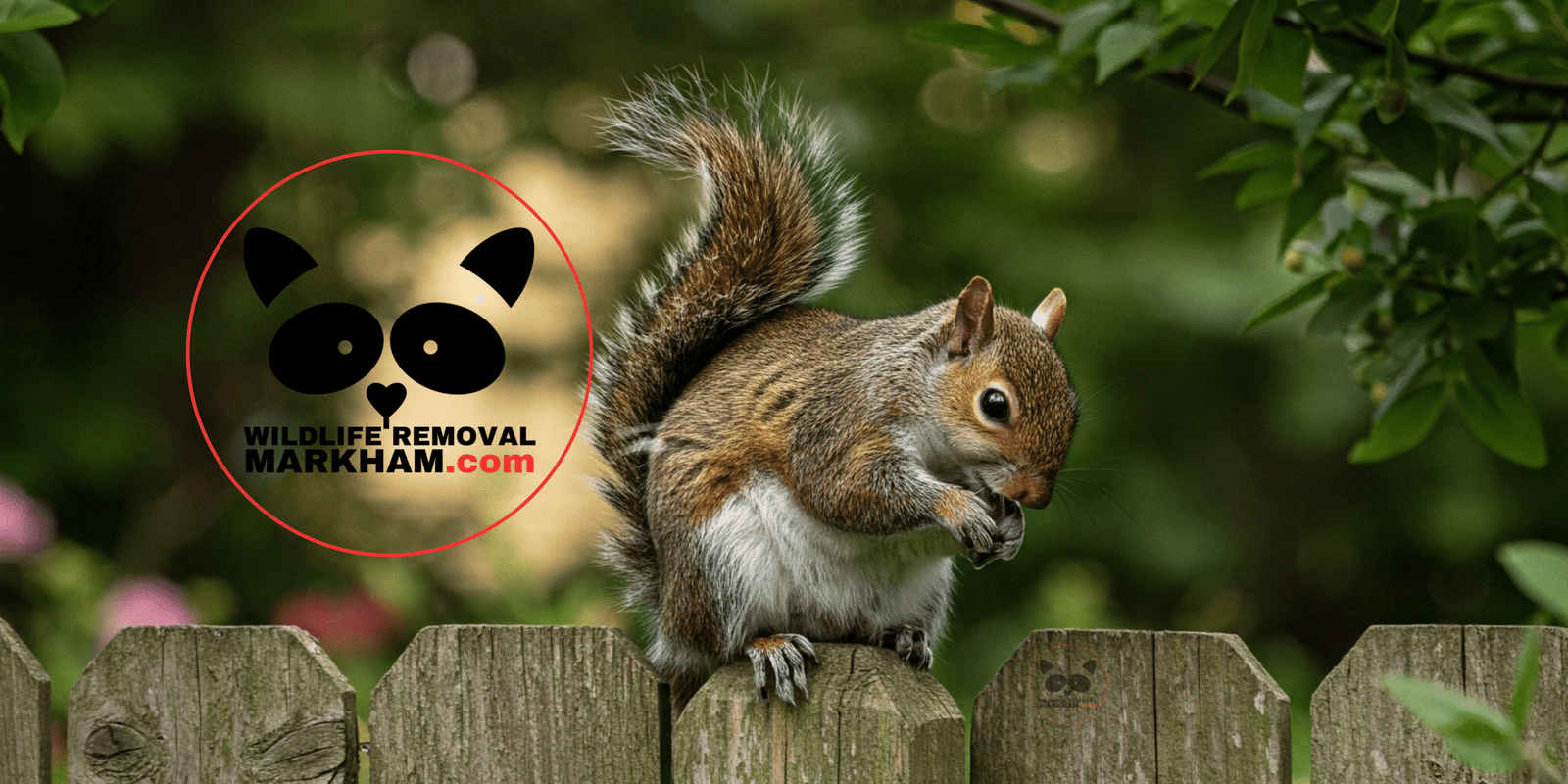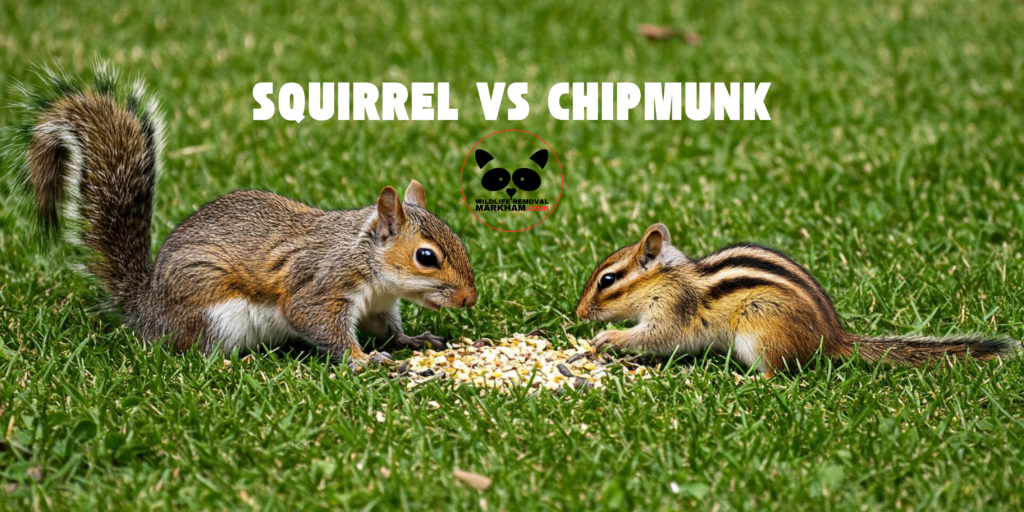When Squirrels Have Babies in Your Markham Attic
Squirrels are one of the most adaptable wild animals in North America. Their ability to thrive in both natural and urban environments often puts them in our face, especially during baby squirrel season. Squirrels have specific breeding seasons, usually in the fall or spring, which is important to know for Markham homeowners concerned about wildlife in and around their homes.

Squirrel Breeding Periods
Squirrels, grey squirrels, red squirrels, and flying squirrels have a unique breeding cycle that is key to their survival and population growth. Squirrels breed in early spring and late summer, with female adult squirrels having two litters per year. Male squirrels are not involved with the babies, as they leave the female shortly after mating. Knowing the breeding habits of squirrels is crucial for wildlife management and squirrel removal services.
Squirrels’ breeding cycles are seasonal, with a 45 day gestation period. Female squirrels, like eastern grey squirrels, play a big role in the breeding process, with males competing for their attention during mating season. Mating season is a critical time for squirrel populations, with the success of the breeding cycle determining the overall health of the population.
Squirrels’ breeding habits are influenced by environmental factors, like food and weather, which can impact the success of the breeding season. Some nests are built up in tall trees, while others chew their way into your attic where the babies will require safe removal by hand. Effective squirrel removal services require knowing the breeding habits and cycles of squirrels, including identifying entry points and removing squirrels from homes and properties.
Squirrel Breeding and Mating Seasons
When is Squirrel Mating Season?
Squirrels breed twice a year, with their main mating season in late winter. This way, baby squirrels are born in early spring when food is increasing. A second breeding season happens in late summer so some species can have a second litter before winter. Warm weather is ideal for observing squirrels mating. During these breeding periods, male squirrels compete for female squirrels. It’s common for other males to challenge each other for access to one female, especially during peak litter season in late December. Mating habits vary between common squirrel species, including grey squirrels, flying squirrels, fox squirrels, and red squirrels.
Squirrel Gestation and Birth
Squirrel Gestation Period
The average gestation period for female grey squirrels and eastern grey squirrels is 38-46 days. Once pregnant, a soon-to-be mother squirrel will spend the gestation period building or reinforcing her nest to prepare for her babies. Squirrels typically have 2-5 baby squirrels per litter, but this can vary by species.
Squirrel Birthing Season
Squirrel birthing season refers to the months when squirrels give birth, typically ranging from early spring to late summer. During this time, homeowners may notice increased activity around trees, rooftops, or inside attics as female squirrels care for their newborns.
The presence of a squirrel’s nest near your property often indicates that squirrel babies are hidden nearby. It’s important to monitor your pets when outdoors, as mother squirrels can be highly protective of their young, which remain dependent on them until they reach approximately 10 to 12 weeks of age.
The squirrel birthing season is the period of months when squirrels give birth, usually from early spring to late summer. Homeowners may notice increased activity near trees or in attics as female squirrels tend to their newborns. Seeing a squirrel’s nest near your home during these times often means there are squirrel babies hidden nearby. Be watchful of your pets if you let them outside on their own, as squirrel mothers are extremely defensive, as the young squirrels don’t become fully independent until they are around 10-12 weeks old.
Baby Squirrels
What Newborn Squirrels Look Like
Newborn baby squirrels are born hairless, blind, deaf, and completely dependent on their mother. When she gives birth, the litters ears and eyes are sealed shut and their pink skin is exposed to the elements.
Growth Milestones
Within a few weeks, the babies grow noticeably, starting to develop fur and their eyes and ears open by about four weeks old. By six weeks, they grow strong teeth and start eating solid food, although they will still nurse on mother’s milk for a short while after. Baby squirrels typically become adult at around nine months old. With regards to breeding, Red squirrel can reach sexual maturity by nine to ten months old, other species such as Eastern Grey squirrels can take up to twelve months to reach that milestone.
Squirrel Diet and Nutrition
Squirrels are omnivores and their diet consists of various foods including nuts, seeds, fruits and insects. Squirrels’ nutritional needs vary by season, with breeding females needing a diet rich in protein and fat before she gives birth, to support the growth and development of their young. They will eat nest eggs and baby birds as well.
Squirrels have the ability to store food in different locations, including tree cavities and underground burrows, which helps them survive during food scarcity. The squirrels’ diet plays a big role in their breeding success, a balanced and nutritious diet is essential for healthy offspring. Squirrels’ dietary needs vary by age, sex and reproductive status, breeding females need a more nutrient rich diet than non-breeding females or males. Understanding squirrels’ dietary needs is key to developing effective wildlife management strategies including squirrel removal services and wildlife conservation programs.
Squirrels’ foraging behavior is influenced by food availability, squirrels adapt their diet to the changing seasons and food availability. Squirrels’ nutritional needs are closely tied to their breeding habits, a balanced and nutritious diet is essential for the breeding cycle to be successful.
Where Do Squirrels Nest and Raise Their Young?
Common Nesting Spots
A mother squirrel will build her nest high in trees or in safe enclosed spaces like attics and sheds, especially in late winter when the weather is cold. These squirrel drays provide protection from predators (birds) and harsh weather. Gray squirrels often choose high trees or attics for their nests.
Identifying a Squirrel’s Nest
Look for leaves, twigs and insulation gathered into a ball-shaped nest. Finding these materials near potential entry points in your home means there’s an active litter inside.


How to Handle Squirrel Baby Season Around Your Home
Why You Shouldn’t DIY
Trying to remove baby squirrels or a mother squirrel without wildlife control to help can harm the animals and your pets. It’s also dangerous to separate young grey squirrels from their mothers as they rely on her for warmth, food and critical development.
Safe and Humane Wildlife Removal
Markham wildlife services can humanely remove both adult and baby squirrels, ensuring the safety of the female squirrel. The experts at Wildlife Removal Markham know how to safely locate and relocate a squirrel’s nest, so no babies are left behind. They will also make suggestions on other areas of your roof for prevention screening. This prevents future infestations and reduces the risk to your home and surrounding wildlife.
Fun Facts About Squirrel Species and Breeding
Meet the Common Squirrel Species
Several squirrel species are responsible for most squirrel kit season activity in North America. These include the eastern grey squirrels (Sciurus carolinensis), red squirrels, fox squirrels and flying squirrels. Each has its own breeding season and nesting habits. Mother squirrels will go to great lengths to protect their babies from predators and environmental dangers. Once they reach maturity, young squirrels leave the nest and start building their own homes, ready for the next breeding season in December or January.
Final Thoughts
Now you know about squirrel gestation, breeding season and pup season. Contact the wildlife experts at Wildlife Removal Markham if you suspect a squirrel’s nest is in your home.





